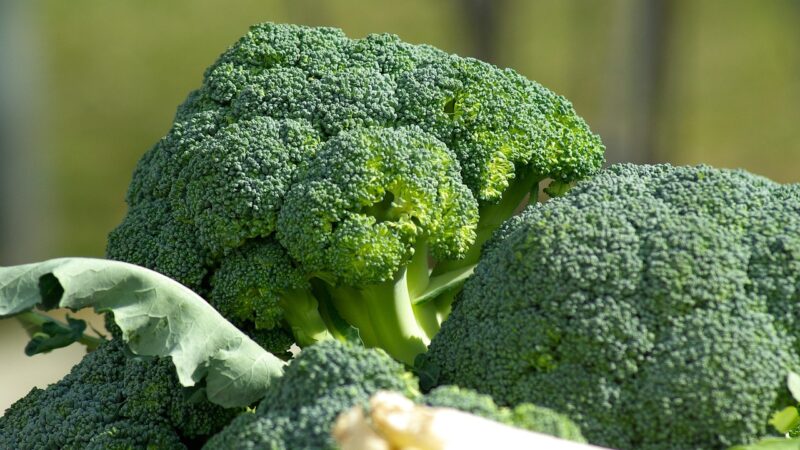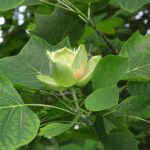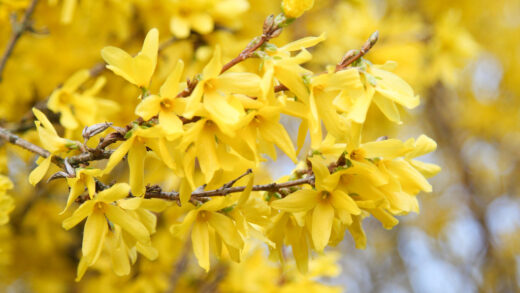The overwintering of broccoli

The concept of overwintering broccoli involves cultivating specific varieties of the plant through the winter months for a very early spring harvest. This practice is most successful in regions with mild winters, where temperatures do not consistently drop far below freezing for extended periods. The goal is not to have the plant produce heads during the coldest part of winter, but rather to have it establish a strong root system and a healthy frame in the autumn. The plant then enters a state of near-dormancy during the winter, resuming vigorous growth and quickly producing heads as the days lengthen and temperatures rise in early spring, often yielding a harvest well before spring-sown crops.
This technique relies on a shift in timing and variety selection compared to traditional spring or fall broccoli cultivation. Overwintering varieties are specially bred for cold hardiness, enabling them to survive freezing temperatures that would kill standard broccoli types. The process begins with a late summer or early autumn planting, timed precisely so that the plants reach a specific stage of maturity before the onset of the harshest winter weather. This careful timing is critical; if the plants are too small, they may not survive, and if they are too large, they may be more susceptible to cold damage or premature flowering.
The primary benefit of overwintering broccoli is the incredibly early harvest it provides. By having mature plants ready to go at the first sign of spring, you can enjoy fresh, homegrown broccoli at a time when most gardeners are just beginning to sow their seeds. This early crop often boasts a superior flavor, as the cold temperatures can convert the plant’s starches into sugars, resulting in heads that are exceptionally sweet and tender. This method effectively fills the “hungry gap” in early spring when the previous year’s stored vegetables are running out and the new season’s crops are not yet ready.
Successfully overwintering broccoli requires a proactive approach to protecting the plants from the most severe winter conditions. While the selected varieties are cold-hardy, they still benefit from protection against harsh winds, heavy snow, and extreme temperature drops. Utilizing tools such as cold frames, low tunnels, or even a thick layer of organic mulch can create a more stable microclimate around the plants. This protection helps to buffer them from the worst of the weather, ensuring their survival and setting them up for a burst of productive growth as soon as spring arrives.
Selecting suitable overwintering varieties
The single most important factor for success when attempting to overwinter broccoli is the selection of an appropriate variety. Standard broccoli cultivars, which are bred for spring or fall production, generally lack the necessary cold hardiness to survive freezing winter temperatures. You must specifically seek out varieties that have been developed and designated for overwintering. These types have been selected for their ability to withstand repeated frosts and freezing conditions without sustaining fatal damage.
More articles on this topic
Overwintering varieties are often categorized as “sprouting broccoli” rather than the large, single-headed broccoli that many are accustomed to. A popular and reliable type is Purple Sprouting Broccoli. These plants are exceptionally hardy and, after surviving the winter, produce a multitude of small, purple florets or side shoots in the early spring rather than a single large central head. There are also green-sprouting varieties available that have been bred for the same purpose and offer excellent cold tolerance and a delicious spring harvest.
When sourcing your seeds, it is crucial to read the descriptions carefully and choose those that explicitly state they are for overwintering or are very cold-hardy. Seed catalogues and suppliers that specialize in vegetables for specific climates are excellent resources for finding these specialty cultivars. Pay attention to the recommended planting times and the expected maturity dates provided for these varieties, as this information is key to timing your sowing correctly for your specific climate zone.
Do not be tempted to try and overwinter a standard, large-headed broccoli variety unless you live in a very mild climate where hard freezes are rare. While the plant might survive a few light frosts, it is unlikely to make it through a truly cold winter. Investing in the correct genetics from the start is the foundational step upon which all other overwintering efforts are built. The unique traits of these hardy varieties are what make this rewarding cultivation method possible.
Timing the fall planting
The timing of your late summer or early autumn sowing is a delicate balancing act that is absolutely critical to the success of your overwintering broccoli crop. The objective is to give the plants enough time to grow and become well-established before the arrival of the first hard freezes and the significant reduction in daylight hours. Ideally, the plants should reach a stage where they have a robust root system and a sturdy frame of about eight to ten inches in height before the severe cold sets in.
More articles on this topic
If you plant the seeds too early, the plants may grow too large and even begin to form small heads before winter. These developed heads are highly susceptible to damage from freezing and thawing cycles and can easily rot during the wet winter months. Furthermore, a plant that is too mature is more likely to bolt and go to flower prematurely in the spring instead of producing a quality crop. This is a common point of failure for those new to the overwintering method.
Conversely, planting the seeds too late in the season is equally problematic. If the plants are too small and underdeveloped when the cold weather arrives, their root systems will not be extensive enough, and they will lack the necessary energy reserves to survive the winter. These small, weak plants are much more likely to succumb to the cold, wind, and moisture of the winter months. Finding the sweet spot for planting is therefore essential.
As a general guideline for many temperate climates, seeds for overwintering broccoli should be sown indoors in mid-to-late summer and then transplanted into the garden in early autumn. This typically translates to sowing around July or August for a transplanting date in September or early October. However, this timing can vary significantly based on your specific agricultural zone and local climate patterns. Consulting with local extension services or experienced gardeners in your area can provide invaluable, location-specific advice on the optimal planting window.
Protecting plants from frost
While overwintering varieties are inherently cold-hardy, providing them with additional protection from the harshest winter elements can significantly increase their survival rate and overall health. The primary threats during winter are not just the cold itself, but also harsh, drying winds and the physical damage that can be caused by heavy snow or ice. Creating a sheltered microclimate can buffer the plants from these stressors and help them emerge in spring in the best possible condition.
One of the most effective methods for protecting your overwintering broccoli is to use a low tunnel or a cold frame. A low tunnel can be easily constructed using PVC pipes or metal hoops to create arches over the planting bed, which are then covered with a layer of horticultural fleece or clear greenhouse plastic. This structure shields the plants from wind and snow and can raise the ambient temperature around the plants by several degrees, which can be the difference between survival and failure during an extreme cold snap.
For a smaller number of plants, a cold frame offers a more permanent and sturdy form of protection. This is essentially a bottomless box with a clear, sloped lid that allows sunlight to enter and warm the interior. Placing a cold frame over your broccoli plants provides excellent insulation from cold temperatures and complete protection from wind and snow. On sunny winter days, it is important to vent the cold frame to prevent it from overheating, which could stress the plants or cause them to break dormancy too early.
A simpler, though slightly less effective, method of protection is to apply a thick layer of organic mulch around the base of the plants in late fall, after the first light frost but before the ground freezes solid. A four-to-six-inch layer of straw, shredded leaves, or pine needles helps to insulate the soil and the plant’s root system from extreme temperature fluctuations. This mulch layer protects the roots from the damaging effects of repeated freezing and thawing cycles and helps to conserve soil moisture throughout the winter.
Care and harvesting during winter
Once your overwintering broccoli is established and protected for the cold months, the need for active care diminishes significantly, but does not disappear entirely. The plants will enter a period of very slow growth or dormancy, so they will not require any fertilization during the winter. Applying fertilizer at this time would be ineffective, as the plant cannot utilize it, and it could even encourage a flush of tender new growth that would be immediately damaged by a frost.
Watering needs will also be drastically reduced during the winter. In many climates, natural precipitation in the form of rain or snow will provide sufficient moisture. However, during extended dry periods, especially in combination with windy conditions, the soil can still dry out. It is important to check the soil moisture every few weeks. If the soil is dry several inches down, provide a deep watering during a warmer, above-freezing day to ensure the roots remain hydrated.
As winter transitions into early spring, you will need to be vigilant and monitor the plants for signs of new growth. As the days lengthen and temperatures begin to rise, the plants will break their dormancy and start to grow vigorously. This is the time to remove any heavy winter mulch from the crown of the plants and to start venting your cold frames or low tunnels more frequently to acclimate the plants to the ambient conditions. A light feeding with a balanced fertilizer can be applied at this time to support the new burst of growth.
The harvest of overwintering broccoli is the reward for a season of patience. The plants will begin to produce numerous side shoots or florets. Harvest these shoots regularly when they are well-formed but before the individual flower buds begin to open and turn yellow. Use a sharp knife to cut the shoots, which will encourage the plant to produce even more. This continuous harvesting can often last for four to six weeks, providing a much-welcomed supply of fresh, sweet-tasting broccoli at the very start of the gardening season.


















